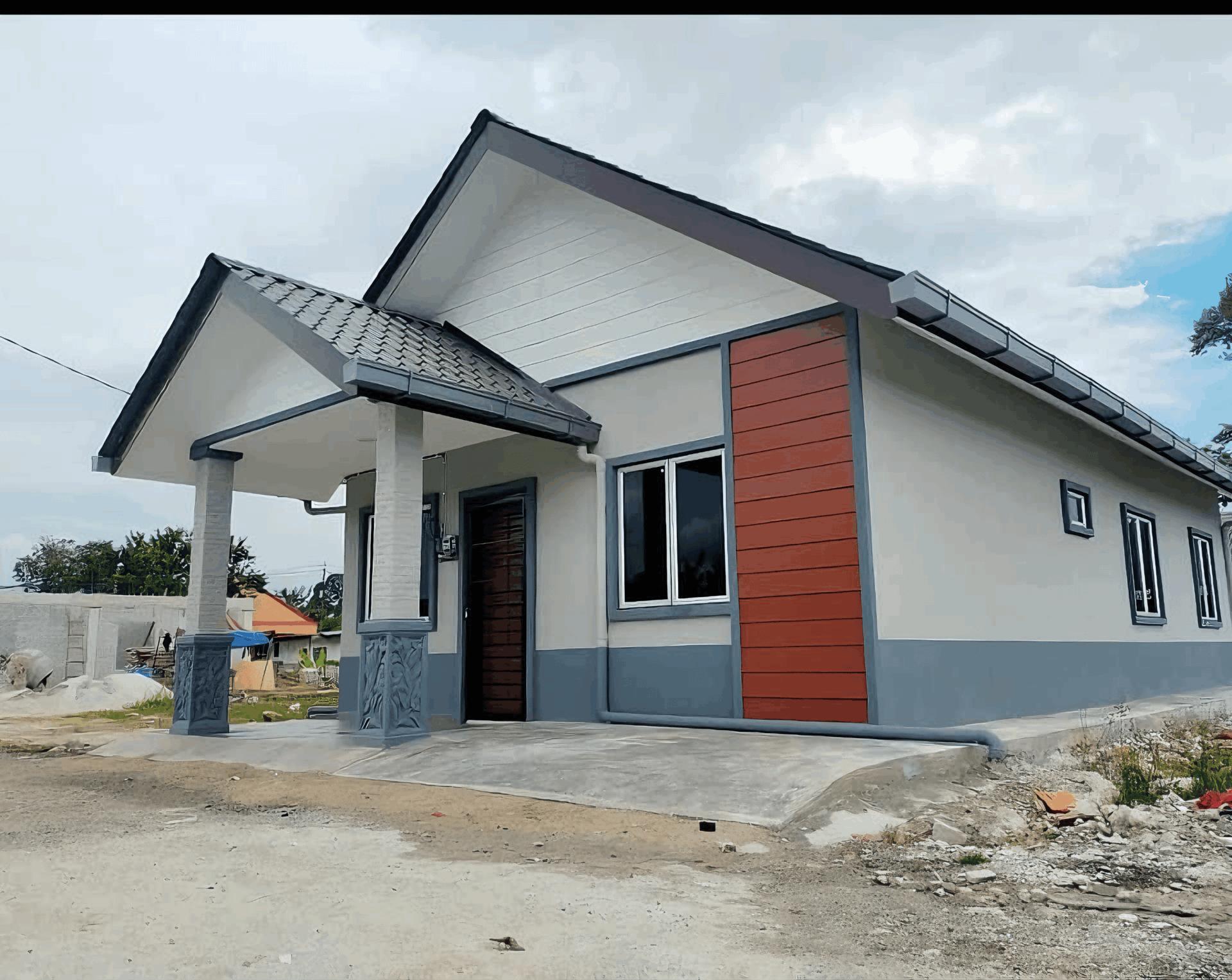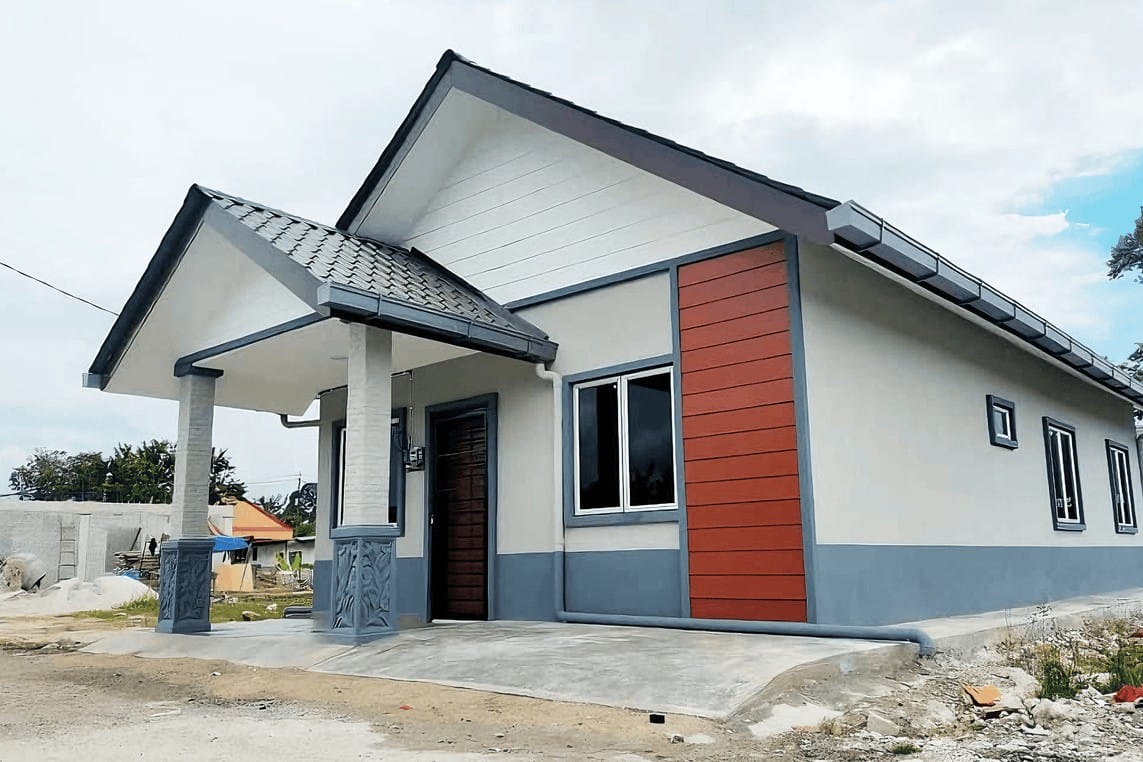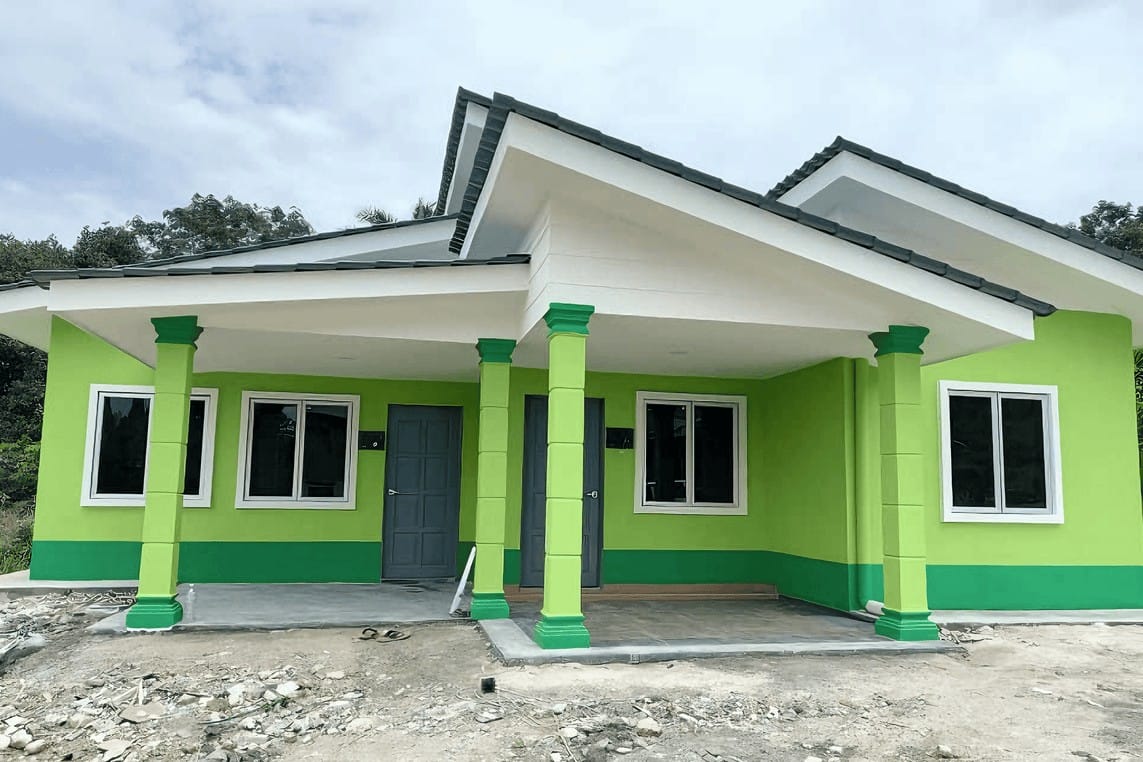Why Treating Milestones Like Finish Lines Could Sabotage Your Building Plans | RumahHQ

Hey there, fellow builders and dreamers! We all know that feeling when we hit a milestone—like completing a project phase, finishing a year of hard work, or nailing down a major goal. It’s tempting to throw a mini celebration, right? But hold on! What if treating these milestones like finish lines is actually messing up our building plans? In a world where progress can feel like a race, we might be missing the bigger picture. Instead of using milestones as markers of success, what if we viewed them as stepping stones in our journey? In this article, we’ll explore why celebrating milestones is important, but not at the cost of stagnation. Let’s dive into how a shift in mindset could propel us further in our endeavors!
Recognizing the Difference Between Milestones and Finish Lines
In any building project, it’s vital to identify your milestones correctly. Think of milestones as those exciting markers along your journey—they’re not the finish line but rather checkpoints that help you gauge progress. Each milestone achieved brings a sense of accomplishment and serves as a reminder of how far you’ve come. By treating these milestones as mere stops along the way, you set the stage for greater insights and improvements to your plan. Understandably, focusing solely on the end goal can lead to dissatisfaction, especially if the journey presents unexpected challenges.
Now, let’s consider the risks that come with mistaking a milestone for a finish line. When you do this, you might rush through critical processes, hurrying towards an ill-defined “end.” This could manifest in various ways, including:
- Compromised Quality: Cutting corners to reach a supposed finish can lead to mistakes.
- Missed Opportunities for Feedback: Skipping evaluations means you might overlook valuable insights from each stage.
- Burnout: When every step feels like a sprint, you risk exhausting your team and resources.
Instead, consider adopting an approach where milestones are precious opportunities for reflection and adjustment. Below is a simple way to visualize the distinction:
| Milestones | Finish Lines |
|---|---|
| Checkpoints in progress | Final goal |
| Opportunities for adjustments | Static endpoint |
| Encourage teamwork | Solo rush |
Recognizing the dynamics between these two concepts can transform your building journey into a more rewarding experience. Instead of simply racing to the finish line, let each milestone be a stepping stone that enriches your project, allowing adaptability and sustained momentum toward lasting success.

The Psychological Impact of Viewing Milestones as End Points
Seeing milestones as mere finish lines can have deep psychological implications that stretch beyond just a sense of completion. When you treat achievements as destined endpoints, the excitement of progress can quickly turn into a sense of emptiness once that milestone is crossed. Instead of celebrating the journey, you might find yourself stuck in a cycle of chasing the next goal, leading to feelings of dissatisfaction and burnout. It’s like running a marathon and forgetting to enjoy the scenery – all you focus on is crossing the finish line.
This all-or-nothing mindset can also foster a fear of failure. When you define success solely by reaching milestones, any misstep along the way might feel catastrophic. Rather than viewing setbacks as valuable learning experiences, they can be perceived as failures that threaten to derail your overall progress. This pressure can lead to anxiety, stifling your creativity and willingness to explore innovative solutions that could enhance your plans. Moreover, it can inhibit collaboration and communication with others who share your journey, as you might become overly focused on individual goals rather than collective growth.
Embracing a more fluid understanding of milestones can shift your mindset and cultivate a healthier relationship with your ambitions. Consider reframing your milestones as stepping stones in an ongoing journey. By doing this, you allow more room for reflection, adaptation, and reinvention. Here’s a quick overview of benefits associated with this mindset:
| Benefits of Viewing Milestones as Stepping Stones | Potential Impacts |
|---|---|
| Increased Motivation | Fuel for continuous effort and engagement |
| Improved Resilience | Ability to bounce back from setbacks |
| Enhanced Collaboration | Better teamwork and shared success |
| Empowered Learning | Opportunities for personal and professional growth |

Embracing the Journey: The Importance of Continuous Growth
When we reach a milestone, there’s often a feeling of triumph, a sense of having ‘arrived’ at a destination. However, this mindset can lead to complacency, where the thrill of achievement overshadows the continuous journey ahead. Each milestone should be seen as a stepping stone rather than an endpoint. Just as the roads in Malaysia stretch on and on, so too should our pursuits of knowledge and skill. Growth is a process, and like a river that flows ceaselessly, we too should aim to navigate the ever-changing landscape of life.
Consider the benefits of embracing this journey:
- Enhanced adaptability: When we view milestones as temporary markers, we are more open to change and can pivot when circumstances demand.
- Lifelong learning: Each achievement opens new doors for growth. It encourages a mindset where learning doesn’t stop when we hit the next target.
- Fostering creativity: Emphasizing the journey nurtures innovative thinking, pushing us to explore uncharted territories rather than getting boxed into comfort zones.
| Milestone Mindset | Growth Mindset |
|---|---|
| Views achievements as endpoints | Sees achievements as steps in a larger journey |
| Can lead to stagnation | Encourages ongoing development |
| Fears failure post-achievement | Embraces challenges and learns from them |
In our fast-paced world, there’s a tendency to rush toward milestones, but it’s essential to slow down and appreciate the path we traverse. Each experience shapes us and adds to our capabilities, allowing us to build upon our past endeavours. By recognizing that growth is an ongoing journey, we enable ourselves to cultivate resilience and a wealth of experiences that enhance our overall journey in life. Remember, the destination is important but the road we take shapes who we are in the process.

Identifying Key Milestones Without Losing Sight of the Bigger Picture
Milestones mark our progress and serve as crucial indicators of how far we’ve come, but they shouldn’t be the end of our journey. Often, when we complete a milestone, we might feel the urge to celebrate as if we’ve reached the finish line. This mindset can blind us to the broader vision we initially set out to achieve. Instead, it’s vital to acknowledge these milestones as stepping stones, points of reflection that help us adjust our sails while navigating through the complexities of our building plans.
To effectively identify these key milestones, consider the following strategies:
- Break Down Big Goals: Divide larger objectives into smaller, manageable tasks. This makes it easier to outline milestones without losing track of the overall aim.
- Regularly Review Progress: Set aside time to revisit and revise your plans, ensuring every milestone aligns with your ultimate goals.
- Stay Adaptable: Be open to changes and accept that sometimes milestones might need to be adjusted or redefined as projects evolve.
Creating a visual representation of your milestones can further enhance your focus. Consider using a simple table to track your progress, like this:
| Milestone | Status | Next Steps |
|---|---|---|
| Initial Planning | Completed | Move to Design Phase |
| Design Finalization | In Progress | Start Prototyping |
| Prototype Testing | Upcoming | Gather Feedback |

Setting Flexible Goals to Foster Adaptability and Resilience
In the dynamic landscape of life and work, striving for steadfast targets can sometimes feel like chasing a mirage. When we treat milestones as definitive endpoints, we risk boxing ourselves into a rigid framework that stifles creativity and adaptability. Instead, it’s essential to embrace a more fluid perspective on our goals. By allowing for adjustments and redefining success as a continuous journey rather than a series of checkpoints, we cultivate a mindset open to possibilities, helping us navigate the ever-evolving challenges that come our way.
Consider the following strategies to encourage a flexible approach to goal-setting:
- Embrace Incremental Progress: Celebrate small wins along the way, understanding that each step contributes to the bigger picture.
- Welcome Feedback: Be open to insights from peers and mentors which can lead to refining or reshaping your goals.
- Adjust Timelines: Recognize that timelines can shift, and that’s perfectly okay! Flexibility may often lead to more innovative solutions.
To illustrate the benefits of adaptable planning, here’s a quick comparison of traditional rigid goal-setting vs. adaptive goal-setting:
| Rigid Goal-Setting | Adaptive Goal-Setting |
|---|---|
| Focuses on firm deadlines | Prioritizes flexible timelines |
| Success defined by the end result | Success defined by ongoing growth |
| Limited by initial parameters | Open to redefining goals |
By embracing this more adaptable mindset, you’ll not only foster resilience in the face of uncertainty but also unlock a treasure trove of opportunities that may have otherwise gone unnoticed. It’s about learning to ride the waves of change rather than fighting against them, ensuring your strategic plans remain alive and relevant in an ever-fluctuating environment.

Learning from Setbacks: Turning Milestone Misses into Valuable Lessons
Every setback is like a hidden treasure chest filled with lessons just waiting to be discovered. When we treat milestones as the ultimate finish lines, we risk overlooking the wealth of insights that come from the bumps along the way. Each time we fall short of our expectations, it’s an opportunity to pause, reflect, and learn what went awry. This isn’t about dwelling on disappointments, but rather embracing the chance for growth.
To turn a milestone miss into a valuable lesson, consider these approaches:
- Analyze what happened: Was the timeline unrealistic? Did external factors play a significant role?
- Gather feedback: Engage your team or stakeholders. Their perspectives might reveal blind spots.
- Adjust your strategy: Use what you learned to recalibrate your plans, making them more flexible and realistic.
To illustrate how learning from setbacks can reshape our approach, check out the table below that highlights common pitfalls and proactive strategies:
| Common Pitfalls | Proactive Strategies |
|---|---|
| Overly ambitious timelines | Set smaller, incremental goals |
| Lack of contingency plans | Develop backup strategies for key tasks |
| Ignoring team input | Foster open communication for diverse viewpoints |

Strategies for Maintaining Momentum Beyond Achievement
After achieving a significant milestone, it’s easy to kick back and bask in the glory. However, this moment of celebration should also be a springboard for future endeavors rather than a stopping point. To keep the fire alive, consider integrating these strategies into your routine:
- Set New Goals: Once you’ve reached one destination, plot your course for the next. Think about what excites you; it could be a new skill, a new project, or even expanding your team.
- Celebrate in Moderation: A brief celebration can definitely recharge your spirit! But don’t let it linger too long. Acknowledge your achievement but shift your focus to what’s next.
- Stay Connected: Surround yourself with like-minded individuals. Whether it’s through networking, forums, or local meet-ups, staying engaged can spark new ideas and fuel your momentum.
Another critical aspect is reflection. Use this time to evaluate your journey thus far. Ask yourself the following:
| Questions for Reflection | Purpose |
|---|---|
| What worked well? | Identify strengths to replicate. |
| What challenges did I face? | Learn from obstacles to better prepare for future goals. |
| What can I improve? | Continuous self-improvement fuels long-term success. |
Lastly, create a rhythm of consistent action. It’s about maintaining the drive even when the thrill of achievement fades. By incorporating daily or weekly habits that align with your long-term visions, you’ll ensure that each milestone is not an endpoint but rather part of a larger journey. Some ideas could be:
- Daily Affirmations: Remind yourself of your strengths and aspirations.
- Regular Check-ins: Set aside time weekly to track progress or pivot as needed.
- Accountability Partners: Team up with someone who shares similar goals to keep each other on track.

Cultivating a Mindset of Lifelong Progress and Development
When we hit those big milestones in our lives, it’s tempting to throw our hands up and declare, “I did it!” But treating these achievements like finish lines can be a serious setback in our personal development. Instead of basking in the glow of success, consider using these points as stepping stones for further growth. Think of it as a journey where every destination opens up new avenues to explore.
Shift your perspective to see milestones as part of a larger journey. Here are some ways to maintain a healthy growth mindset:
- Reflect on what you’ve learned: Take time to assess not just what you accomplished, but how you got there.
- Set new goals: Use your achievements as a launchpad for new challenges rather than a stopping point.
- Celebrate the process: Find joy not just in the results, but also in the everyday actions that lead to growth.
To visualize this concept, let’s look at a simple table showcasing steps to build a growth-oriented lifecycle:
| Stage | Focus | Next Step |
|---|---|---|
| Achievement | Recognize success | Reflect |
| Reflection | Assess learnings | Set new goals |
| Goal Setting | Define next steps | Take action |
In Retrospect
As we wrap up our chat about milestones and building plans, it’s clear that treating these markers like finish lines can be a bit of a slippery slope. Just like in a great meal, where every ingredient plays its part, building a successful journey means recognising that milestones are stepping stones, not the end of the road. Remember, it’s about the growth and the lessons you gain along the way, not just ticking boxes.
So, as you plot your course in whatever project you’re tackling—be it a business idea, a personal goal, or even a community initiative—keep this in mind: every milestone is just a moment in the grand story you’re creating. Embrace the journey, learn from each step, and stay flexible. After all, the best adventures often come from the paths we didn’t expect to take. Here’s to building not just for today, but for a thriving tomorrow!











